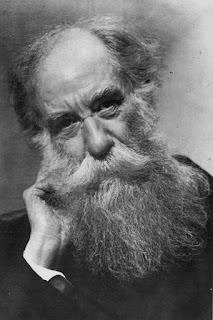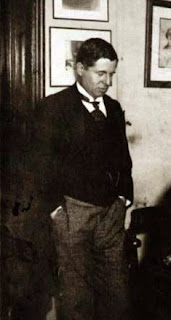Information
Composer: Charles-Valentin Alkan
- 12 études dans tous les tons mineurs, Op. 39: No. 12 in E minor (Le Festin d’Ésope. Allegretto senza licenza quantunque)
- 12 études dans tous les tons mineurs, Op. 39: No. 3 in G minor (Scherzo diabolico. Prestissimo)
- 12 études dans tous les tons majeurs, Op. 35: No. 1 in A major (Allegretto)
- 12 études dans tous les tons majeurs, Op. 35: No. 2 in D major (Allegro)
- 12 études dans tous les tons majeurs, Op. 35: No. 3 in G major (Andantino)
- 12 études dans tous les tons majeurs, Op. 35: No. 4 in C major (Presto)
- 12 études dans tous les tons majeurs, Op. 35: No. 5 in F major (Allegro barbaro)
- 12 études dans tous les tons majeurs, Op. 35: No. 6 in B flat major (Allegramente)
- 12 études dans tous les tons majeurs, Op. 35: No. 7 in E flat major (L'incendie au village voisin. Adagio)
- 12 études dans tous les tons majeurs, Op. 35: No. 8 in A flat major (Lento - Appassionato)
- 12 études dans tous les tons majeurs, Op. 35: No. 9 in C sharp major (Contrapunctus. Amplement)
- 12 études dans tous les tons majeurs, Op. 35: No. 10 in G flat major (Chant d'amour - Chant de mort. Adagio)
- 12 études dans tous les tons majeurs, Op. 35: No. 11 in B major (Posément)
- 12 études dans tous les tons majeurs, Op. 35: No. 12 in E major (Andando)
Bernard Ringeissen, piano
Date: 1990
Label: Marco Polo
http://www.naxos.com/catalogue/item.asp?item_code=8.223351
---------------------------------------------------------------------------
Review
Alkan came from the great nineteenth-century tradition of composer pianists that included Chopin. Liszt, Schumann, Brahms and Busoni. For a time he shared the lavish praise heaped upon these giants of the keyboard, but in 1848 rejected the life of a travelling virtuoso and spent many years as a virtual recluse. His reinstatement as a composer of remarkable depth and sensitivity has been gradual, but is by no means complete. With a pianist of Ringeissen's calibre, this new Naxos series is a substantial step towards wider recognition.
The first two items prepare us for the sheer technical brilliance that practically all Alkan's works demand. Both are clearly intended to wow the audience, and succeed in doing so without virtuosity becoming an end in itself: this is far more impressive stuff than mere pianistic fireworks - Le Festin d'Esope, a rich feast of 25 variations on an original theme that sounds very like the nursery song Baa baa black sheep, develops in many unexpected ways. Childish thoughts are quickly set aside for a thoroughly adventurous treatment of the innocent theme; even humour - not a conspicuous component of romantic piano music - is not absent: several of these variations raise a genuine smile.
The second, Scherzo diabolico, comes closer to Liszt's energetic concert studies but, devilishly difficult though it undoubtedly is, adds up to considerably more than keyboard gymnastics. It is, however, in the 12 Etudes in all the major keys that we encounter Alkan at his most innovative and powerful. There are occasional echoes of Chopin but, needless to say, these are not studies in the same sense as those by Czerny or Bergmuller, though all of the first nine address specific aspects of technique. As a coherent cycle the Etudes test the interpretative resources of a mature recitalist on all fronts, from expressive cantabile to the dramatic metrical changes in the dramatic No, 12 in E flat major, a challenge calmly and creditably met on this record. The scores were scrupulously written and meticulously marked by the composer, and Ringeissen intelligently avoids creating additional hurdles by conspicuously parading his virtuosity. The playing is neat and observant and we are left with a convincing exploration of the mind of a remarkable musical personality.
-- Roy Brewer, MusicWeb International
More reviews:
http://www.classical-music.com/review/alkan-2
http://www.gramophone.co.uk/review/alkan-piano-works-2
http://www.amazon.com/Alkan-Piano-Music-Volume-Etudes/dp/B00005NUOR
---------------------------------------------------------------------------
Charles-Valentin Alkan (30 November 1813 – 29 March 1888) was a French composer and pianist. At the height of his fame in the 1830s and 1840s he was, alongside his friends and colleagues Frédéric Chopin and Franz Liszt, among the leading pianists in Paris, a city in which he spent virtually his entire life. His music requires extreme technical virtuosity, reflecting his own abilities. Busoni ranked Alkan with Liszt, Chopin, Schumann and Brahms as one of the five greatest composers for the piano since Beethoven. For much of the 20th century, Alkan's work remained in obscurity, but from the 1960s onwards it was steadily revived.
http://en.wikipedia.org/wiki/Charles-Valentin_Alkan
http://en.wikipedia.org/wiki/Charles-Valentin_Alkan
***
Bernard Ringeissen (born 15 May 1934 in Paris) is a French classical pianist. He studied with Marguerite Long and Jacques Février. He has performed widely and served on competition juries in many countries. He teaches in Rueil-Malmaison, and gives master-classes at the Salzburg Mozarteum and at the International Summer Seminar in Weimar. His recordings include the complete piano works of Camille Saint-Saëns and of Igor Stravinsky, and many works by Charles-Valentin Alkan, Frédéric Chopin, Claude Debussy (with Noël Lee) and the Russian masters.
---------------------------------------------------------------------------
FLAC, tracks
Links in comment
Enjoy!




























